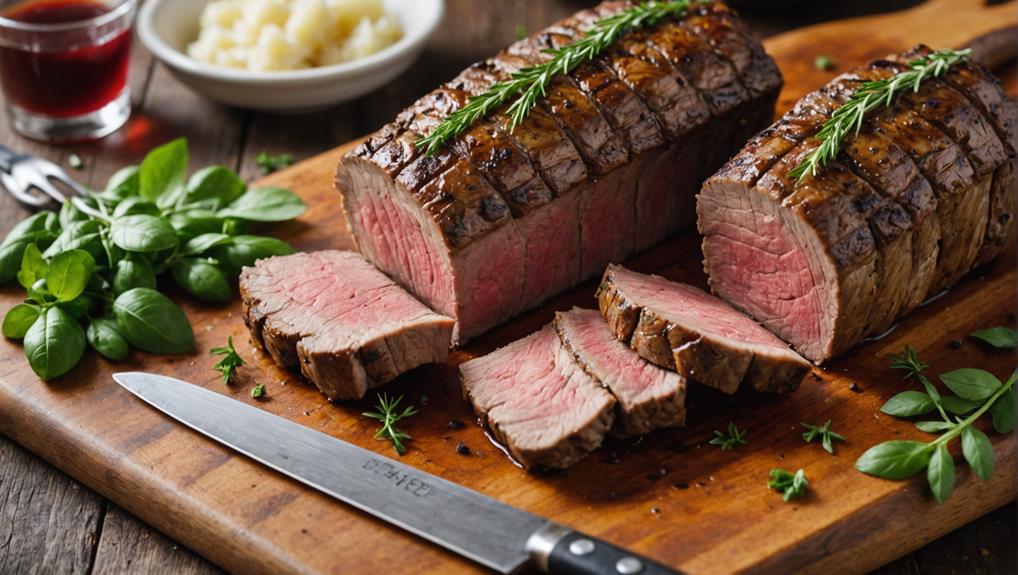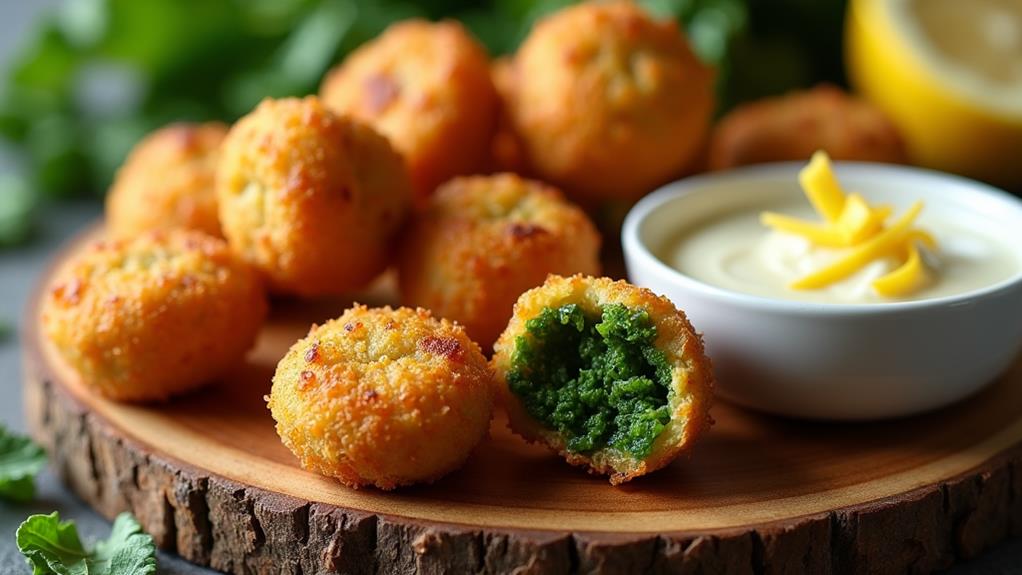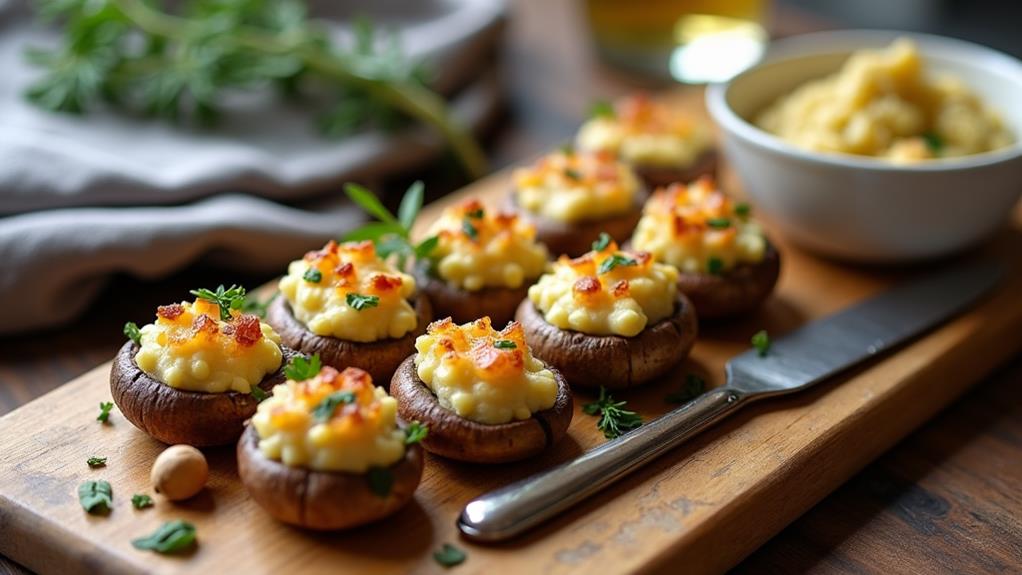To master the art of roasting, start by preheating your oven to 325°F-450°F and bringing meat to room temperature. Choose well-marbled cuts and use a reliable meat thermometer to achieve perfect doneness. Season with a balanced rub or marinade, and elevate the roast on a rack for even cooking. Baste periodically to enhance flavor and retain moisture. After cooking, let the meat rest for 15-20 minutes to redistribute juices, ensuring tenderness. Remember to monitor internal temperatures: 165°F for poultry and 145°F-160°F for beef. These techniques will transform your roasts from good to extraordinary. Uncover more secrets to elevate your culinary prowess.
Essential Roasting Techniques
Essential Roasting Techniques
Roasting's success lies in mastering a few essential techniques. To achieve a succulent and juicy roast chicken or any other meat, you'll need to start with a preheated oven. Set the temperature between 325°F to 450°F, depending on your recipe. This crucial step ensures even cooking and optimal browning.
For inspiration on creating hearty dishes, consider incorporating flavors from Slow Cooker Chili Con Carne into your cooking repertoire.
Before placing your meat in the oven, allow it to reach room temperature. This simple yet innovative approach promotes uniform cooking and reduces overall roasting time.
Next, elevate your roast on a rack within the roasting pan. This clever trick allows hot air to circulate freely, resulting in even heating and improved moisture retention.
Throughout the cooking process, baste your roast periodically with its own juices or added liquids. This technique enhances flavor and maintains moisture, transforming your meal into a culinary masterpiece.
Once your roast is done, resist the urge to carve immediately. Instead, let it rest for 15-20 minutes. This final step allows juices to redistribute, ensuring a tender and flavorful dish that will impress even the most discerning meat lovers.
Selecting Prime Cuts
Now that you've mastered the techniques, let's focus on the foundation of any great roast: selecting prime cuts.
When choosing your meat, prioritize well-marbled cuts with higher fat content, as these ensure improved tenderness and flavor in your final dish. Look for vibrant red coloration, which indicates freshness and quality. Avoid any meat that appears brown or dull, as this may signal a lack of freshness.
As you inspect the meat, pay attention to its texture. Firmer cuts generally indicate higher quality, while stickiness or excessive moisture can be red flags for spoilage.
To elevate your roasting game, familiarize yourself with specific prime cuts suited for different cooking methods. For example, ribeye excels in grilling, while brisket shines in slow-cooking applications.
For the best results, source your meat from reputable butchers who often work with higher-standard farms. This ensures you're starting with top-quality ingredients.
Temperature Control Mastery
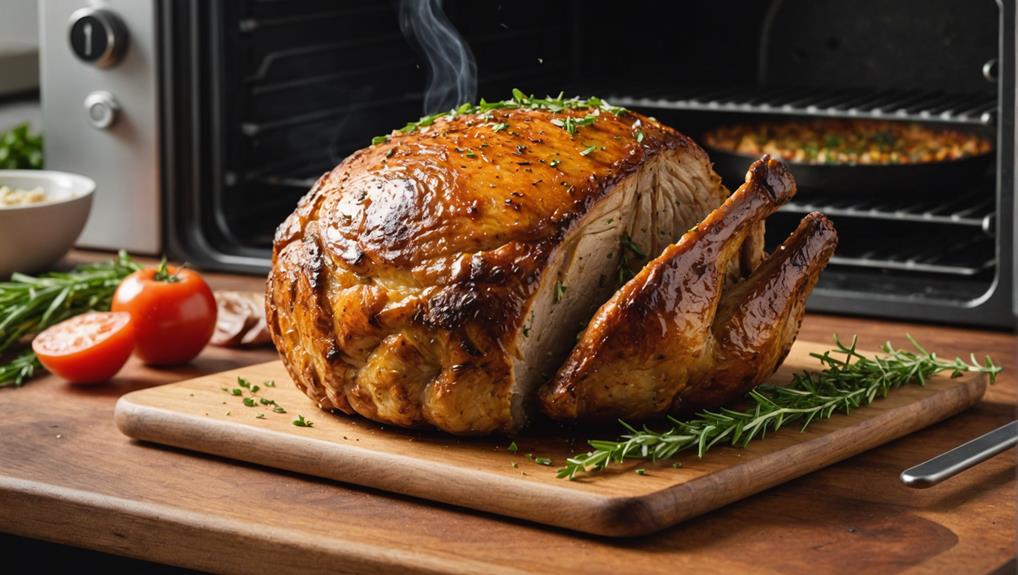
Temperature control is the cornerstone of roasting perfection. As you embark on your culinary journey, mastering this crucial aspect will elevate your roasting game to new heights.
Understanding the ideal internal temperature for different meats is essential; for instance, poultry requires 165°F (74°C), while beef can range from 145°F (63°C) for medium-rare to 160°F (71°C) for medium. To achieve precision, invest in a reliable meat thermometer, your indispensable tool for ensuring safe and perfectly cooked meats.
Don't overlook the importance of resting your roast after cooking. This allows the internal temperature to rise an additional 5-10°F (3-5°C) while redistributing juices for optimal flavor and tenderness.
For superior results, consider roasting at lower oven temperatures, around 325°F (160°C), to promote even cooking and enhance juiciness, especially for larger cuts. Monitor your oven temperature closely and utilize equipment like roasting racks to improve air circulation, ensuring even cooking throughout the meat.
Seasoning and Marinade Secrets
While temperature control is crucial, seasoning and marinades play an equally vital role in elevating your roasts to culinary perfection.
Start with a simple salt and pepper rub as your foundation, then layer on herbs like rosemary, thyme, or sage to enhance the meat's natural flavors.
For a well-balanced marinade, combine equal parts oil and acid, adding flavorful elements such as minced garlic, shallots, and spices to create depth.
To maximize flavor penetration, marinate your meats for at least 30 minutes or up to 24 hours. The acidic components, like lemon juice or vinegar, help tenderize tougher cuts.
Alternatively, consider dry brining by salting the meat a few hours before roasting, which improves flavor without added liquid.
Experiment with innovative flavor profiles using:
- Smoked paprika for a subtle smokiness
- Cumin for an earthy, aromatic touch
- Olive oil and spice rubs for a delicious crust
- Unique herb combinations for personalized flavors
Resting for Optimal Flavor
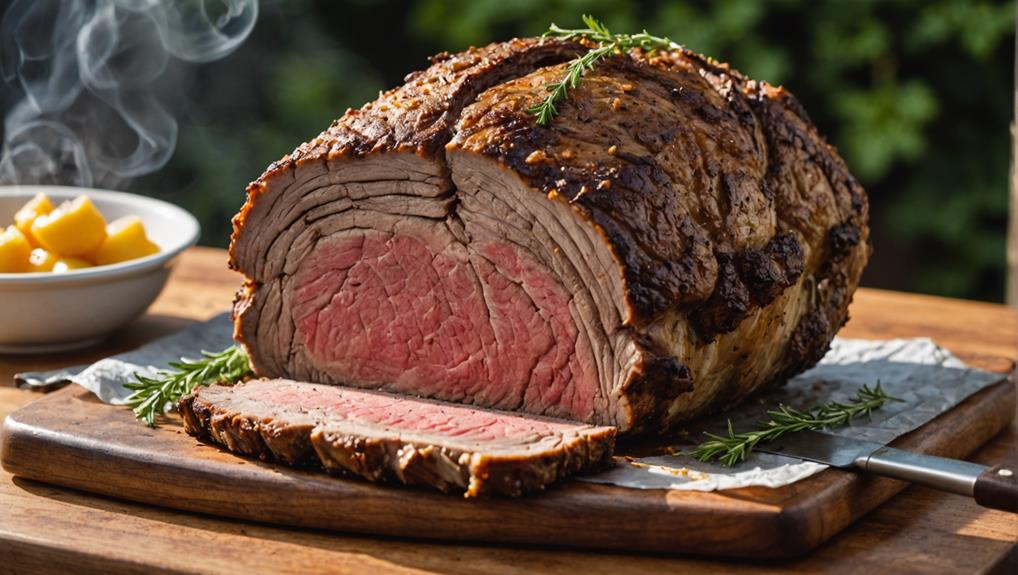
The rest period is a crucial final step in the roasting process that can make or break your culinary creation. After you've cooked your roast to perfection, resist the urge to slice into it immediately. Instead, let it rest for 15-20 minutes to allow the juices to redistribute throughout the meat. This simple yet innovative technique will elevate your roast from good to extraordinary.
To maximize the benefits of resting, tent your roast with foil. This clever method helps retain warmth while preventing moisture loss, ensuring your meat stays succulent. During this time, the internal temperature will continue to rise by 5-10°F, contributing to the desired doneness throughout the cut.
Before resting, use a meat thermometer to confirm you've achieved the perfect internal temperature. This step guarantees your roast is cooked to your liking before the resting process begins.
Frequently Asked Questions
How Do I Modify Roasting Techniques for Game Meats Like Venison?
You'll want to dry brine venison to tenderize it. Marinate game meats to infuse flavor and moisture. Experiment with bold seasoning blends to complement the meat's natural taste. Roast at lower temperatures for longer to maintain juiciness.
Can I Use a Slow Cooker Instead of an Oven for Roasting?
You can't roast in a slow cooker, but you'll love its benefits. It's perfect for tougher cuts, infusing flavors deeply. Try innovative techniques like searing first or adding unexpected spices to elevate your slow-cooked meals.
What Are the Best Wood Chips for Smoking Roasted Meats?
You'll love experimenting with wood chip varieties for smoking roasted meats. Try hickory for bold flavor, apple for sweetness, or mesquite for intensity. Mix chips to create unique flavor profiles and elevate your smoking techniques.
How Do I Adjust Roasting Times for High-Altitude Cooking?
Ever wonder why your roasts aren't perfect at high altitudes? You'll need to make cooking temperature adjustments, increase cooking times, and employ moisture retention strategies. Experiment with flavor enhancement techniques to compensate for the changes in your culinary canvas.
Are There Vegetarian Alternatives That Can Be Roasted Similarly to Meat?
You'll love these innovative veggie options! Try roasting vegetable skewers for a colorful twist, or indulge in savory stuffed mushrooms. For a showstopper, roast a whole cauliflower – it's a game-changer that'll impress even the staunchest meat-lovers.
Final Thoughts
You've now mastered the art of roasting, unlocking the secrets to succulent, flavorful meats. While some argue that high-heat searing is essential for flavor, research suggests it's the Maillard reaction, not searing, that's key. Remember, your roasting journey doesn't end here. Continue experimenting with different cuts, seasonings, and techniques. Trust your instincts, use your thermometer, and don't rush the resting period. With practice, you'll consistently create roasts that will delight even the most discerning meat lovers.

